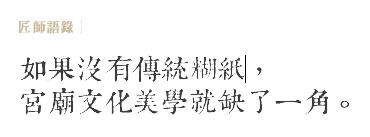紙藝裡的民俗與宮廟文化 ─ 名加紙糊店
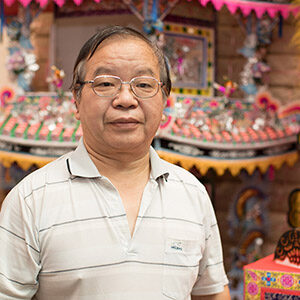
The Customs in Paper Art and the Culture of Temples
Mingjia Papier-mâché Shop
The art of "papier-mâché" enjoys a long history. It is said that Taizong of Tang went to the underworld in his dream, and commanded his craftsmen to build houses with bamboo and paper after waking from the dream in order to burn in the ritual as tributes to ghosts, which becomes a custom that lasts for thousands of years among folks. As our forefathers arrived to Taiwan with the customs of papier-mâché, it is commonly seen in religious rituals and funerals. Hence, it gives off an impression that "papier-mâché is the making of spiritual house (house for afterlife)", and people tend to avoid papier-mâché as the result. In fact, after the modern funerary services takes the place of the archaic customs of wearing mourning attires of white cloth and hemp as well as burning spiritual houses, the rituals of Taoism like JianJiao (Dedication Ceremony), YuanJiao (Celebration Ceremony), and Pudu (Paying Tribute) become the main purposes of papier-mâché art nowadays, which help maintain the craftsmanship of traditional papier-mâché.
Mingjia Papier-mâché Shop has passed down for 4 generation over 90 years. At present, it is Tsou, Chun-Jung that inherited the shop, together with the second brother Tsou, Yung-Fu and fifth brother Tsou, Chi-Tsai, that practices and protects this traditional art. The shop is also the only papier-mâché shop in Taoyuan that could supply materials for celebrations and funerals. Nurtured in the family of papier-mâché, the shop has been passed down to Tsou, Chun-Jun all the way from his great grandfather, which is a live testimony of the traditional papier-mâché in Taiwan over a century.
「糊紙」起源甚早,相傳唐太宗夢遊地府,醒後命工匠以竹子和紙糊成屋,於普渡法會焚燒予亡靈,民間仿效而成流傳千年的習俗。先民渡臺,帶來糊紙習俗,普見於宮廟紅事和民間白事,但一般人往往有「糊紙就是糊靈厝」的印象,對糊紙頗有忌諱。其實,在現今生命禮儀取代從前披麻戴孝、燒靈厝的舊俗後,建醮、圓醮、普渡等道教科儀反倒成了糊紙主要的製作項目,也維繫了糊紙業的傳承。
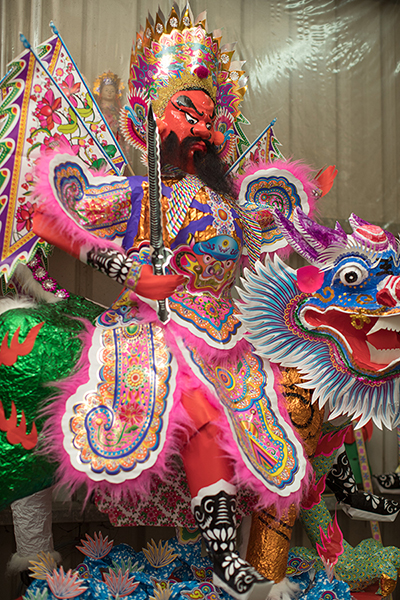
紙糊神址是宮廟法事盛會不可或缺的要角
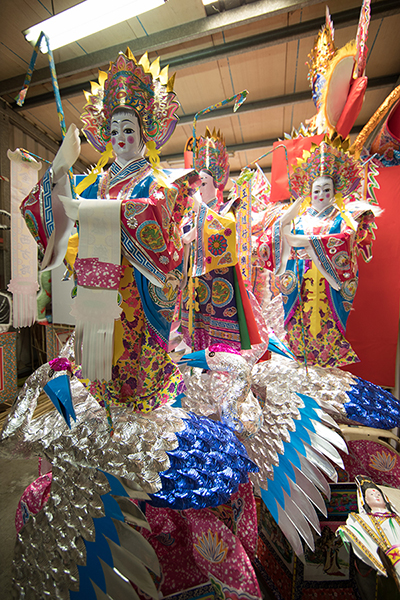
折工精巧的銀鶴毛羽
結合竹編、剪裁、形塑、彩繪的民俗之美
「名加糊紙店」四代相傳,已有九十幾年。目前接掌家業的鄒春榮和二弟鄒永福、五弟鄒基財一起固守這傳統技藝,是桃園地區僅存能做紅事、白事的糊紙店。從小在糊紙世家長大,從曾祖一系相傳的家學淵源到鄒春榮接班,是臺灣糊紙業的百年歷史。
糊紙看起來簡單,用竹材當骨架,再以紙料貼覆裝飾,好像近乎美勞手作;實則結合竹編、剪裁、形塑、彩繪的工序技法,以及道教諸神的人文典故,不僅是竹藝、紙藝、繪藝,還兼融古制,要做到民俗美學和藝術性,不是容易的事。鄒春榮小學畢業即入行學藝,頭幾天劈竹連連受傷,很想打退堂鼓,仍然持續堅持到今日。目前負責製作和經營,他感嘆的說:「靠家族一起努力,才能熬到現在。但傳統手工的成本不敵現代工業製造,加上客戶偏好現代紙材的亮麗色彩,也只能屈服現實,無法維持純手工工序。」
交通不便的昔日,搬運俗稱靈厝的紙房子有其困難。因此,白事糊紙大多到現場施作。「糊紙師在喪家施作的期間,主人一家對我們很敬重,甚至一天五餐款待。這樣的禮遇讓我感到糊紙師是受敬重的行業。」鄒春榮回憶當年做為糊紙師的光榮感,也感嘆現在社會地位的低落,讓年輕人更沒有意願學習這傳統民俗技藝。
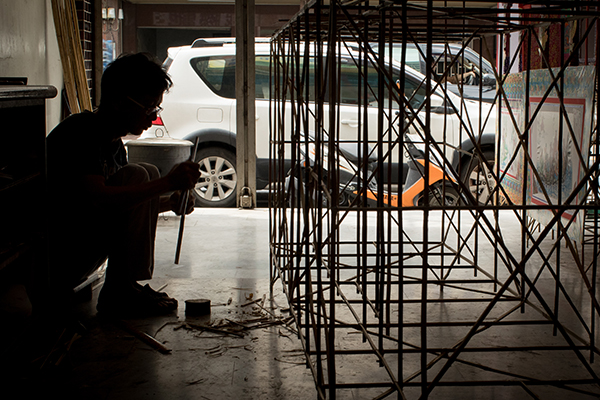
藝師編骨架的身影
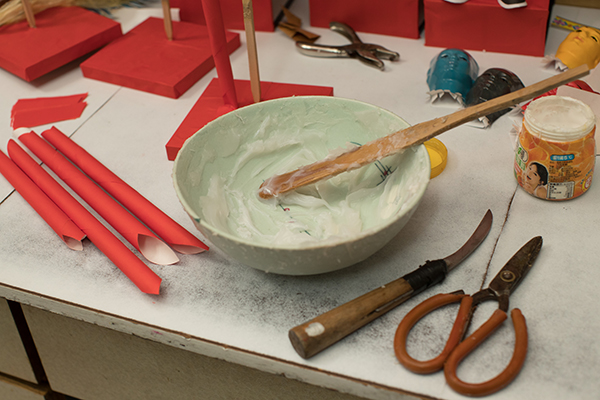
糊紙的工具
糊紙的灰飛煙滅裡,是民俗變遷與宮廟文化演進的軌跡
民間工藝是民俗文化的反映,白事的靈厝、人偶、金童玉女都有其規格和吉祥尺寸,科技化時代除了傳統三合院民宅、別墅豪宅,也增加了豪華名車、電視、音響、3C等生活用品的糊紙。製作項目增多,但白事糊紙不免式微。鄒春榮說:「燒香和燒金紙都因為環保被勸導減少,糊紙更沒地方燒,也不合時代潮流。經濟富裕後,宮廟對建醮、圓醮、普渡辦得更盛大,糊紙神祇的傳統興起,這應該是糊紙的未來。」
鄒春榮糊紙糊了五十幾年,練就自動3D的功力,一張平面圖,不論是神祇、還是小說戲劇人物,他都可以轉換成立體造型。也有新潮的動漫造型角色,委託鄒春榮做成「公仔」,這或許也是糊紙巧藝的轉型之路。
社會變遷,時代不可逆的向前奔流,除了宮廟紅事的支撐,也有社區大學邀請鄒春榮授課,加上動漫公仔的初試啼聲,糊紙藝術有更多可能的創新傳承!
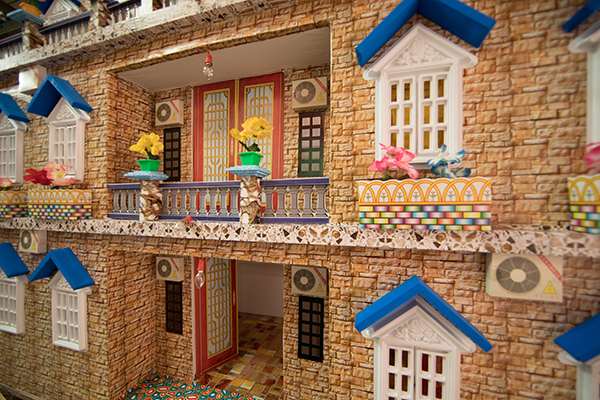
用於白事與時並進的現代紙厝
